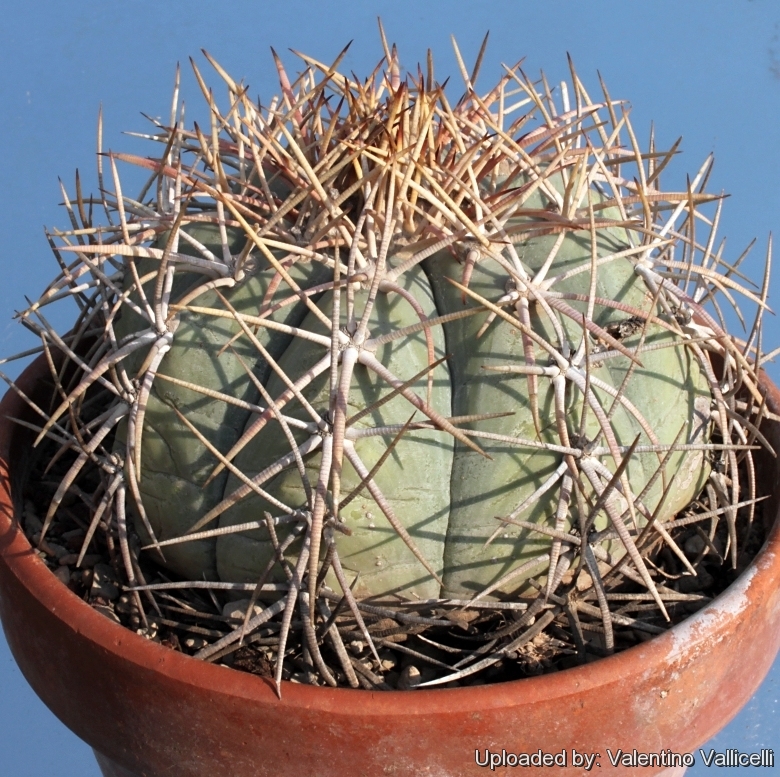
Echinocactus horizonthalonius subs. nicholii Photo by: Valentino Vallicelli
Origin and Habitat: Echinocactus horizonthalonius var. nicholiiSN|18723]]SN|18723]] is restricted to just a few limestone mountain ranges in Sierra del Viejo in northeastern Sonora (Mexico) and in two areas in south-central Arizona (USA), the Waterman Mountains and the Vekol Mountains in southwestern Pinal County. The total population is estimated at 10,000 individuals.
Habitat and ecology: Grows in isolated localities in the calcic rocks often on north-facing slopes where ocotillos (Fouqueria splendens), saguaros (Carnegiea giganteaSN|6374]]SN|6374]]) and other succulents occours. Their major threat is mining activity. However, this habitat is also threatened by off-road vehicles which are not restricted to established roads. Although cactus collectors do not appear to be a serious problem for Nichol's turk's head cacti at this time, seed collection by commercial cactus nurseries may impact the species.
Synonyms:
See all synonyms of Echinocactus horizonthalonius
Common Names include:
ENGLISH: Eagle Claw, Arizona Turk's Head, Devil's Head Cactus, Turk's Cap Cactus, Nichol's Turk's Head, Blue Barrel Cactus, Melon Cactus
SPANISH (Español): Viznaga Meloncillo, Mancacaballo, Mancamula
Description: The Nichol's turk's head cactus (Echinocactus horizonthalonius subs. nicholiiSN|18722]]SN|18722]]), is a small barrel cactus normally unbranched. The blue-green stem bears spines on vertical, spiraling ridges.
Stem: Eight- ribbed, pale grey-green to bright blue-green, reaching a maximum height of 50 cm and a diameter of 20 cm. The plant always grows as a single stem, but because seedlings often grow around its base, it may appear to have multiple stems.
Areoles: Each spine cluster (areole) contains three central and five radial spines.
Flowers. Bright pink or purplish.
Blooming season: April to mid-May often with repeated blooming throughout the heat of the summer and into September.
Fruits: Covered with white, woolly hairs.
Subspecies, varieties, forms and cultivars of plants belonging to the Echinocactus horizonthalonius group
 Echinocactus horizonthalonius Lem.: It is a relatively small barrel cactus that normally grows unbranched. The body of this plant is a chalky blue colour, and some forms have magnificent spines.
Echinocactus horizonthalonius Lem.: It is a relatively small barrel cactus that normally grows unbranched. The body of this plant is a chalky blue colour, and some forms have magnificent spines. Echinocactus horizonthalonius var. minimus: even very small plants are able to flower. Distribution: Cedral towards Esacion Vanegas, San Luis Potosi, Mexico.
Echinocactus horizonthalonius var. minimus: even very small plants are able to flower. Distribution: Cedral towards Esacion Vanegas, San Luis Potosi, Mexico. Echinocactus horizonthalonius f. montruosa hort.
Echinocactus horizonthalonius f. montruosa hort. Echinocactus horizonthalonius subs. nicholii (L.D.Benson) Doweld: Stem eight- ribbed, pale grey-green to bright blue-green, up to 50 cm tall and 20 cm across. Distribution: Sierra del Viejo, Sonora (Mexico) and Pinal County, Arizona (USA).
Echinocactus horizonthalonius subs. nicholii (L.D.Benson) Doweld: Stem eight- ribbed, pale grey-green to bright blue-green, up to 50 cm tall and 20 cm across. Distribution: Sierra del Viejo, Sonora (Mexico) and Pinal County, Arizona (USA). Echinocactus horizonthalonius var. subikii Stanik & Dráb: is a rare, very stunted, bluish frosted and pure white Flowering form. Distribution: Ejido Soledad, Nuevo León, Mexico
Echinocactus horizonthalonius var. subikii Stanik & Dráb: is a rare, very stunted, bluish frosted and pure white Flowering form. Distribution: Ejido Soledad, Nuevo León, Mexico Echinocactus horizonthalonius cv. Albinous (Yellow form) hort.: ( Chlorophylless form) Stem with a bright yellow overall appearance and grey/red contrasting spines.
Echinocactus horizonthalonius cv. Albinous (Yellow form) hort.: ( Chlorophylless form) Stem with a bright yellow overall appearance and grey/red contrasting spines. Echinocactus horizonthalonius cv. Sirotoge Suiheimaru hort.: Short spined mutant selected in Japan.
Echinocactus horizonthalonius cv. Sirotoge Suiheimaru hort.: Short spined mutant selected in Japan.
Bibliography: Major references and further lectures
1) "San Xavier Development Project, Construction and Operation: Environmental Impact Statement" 1989
2) Scott Calhoun "The Gardener's Guide to Cactus: The 100 Best Paddles, Barrels, Columns, and Globes" Timber Press, 31 January 2012
3) John R. Matthews "The Official World Wildlife Fund guide to endangered species of North America" Beacham, 1992
4) N. L. Britton, J. N. Rose “The Cactaceae. Descriptions and Illustrations of Plants of the Cactus Family.” Volume 4, The Carnegie Institution of Washington, Washington 1923
5) Curt Backeberg “Die Cactaceae: Handbuch der Kakteenkunde” Gustav Fischer Verlag, Stuttgart New York 1982–1985
6) Goettsch, B.K., Gómez-Hinostrosa, C., Heil, K., Terry, M. & Corral-Díaz, R. 2013. Echinocactus horizonthalonius. The IUCN Red List of Threatened Species. Version 2015.1. <www.iucnredlist.org>. Downloaded on 12 June 2015.
7) James Cullen, Sabina G. Knees, H. Suzanne Cubey "The European Garden Flora Flowering Plants: A Manual for the Identification of Plants Cultivated in Europe, Both Out-of-Doors and Under Glass" Cambridge University Press, 11/Aug/2011
8) Edward Anderson “The Cactus family” Timber Press, Incorporated, 2001
9) David R Hunt; Nigel P Taylor; Graham Charles; International Cactaceae Systematics Group. "The New Cactus Lexicon" dh books, 2006
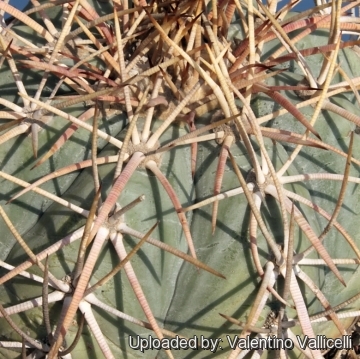 Echinocactus horizonthalonius subs. nicholii Photo by: Valentino Vallicelli
Echinocactus horizonthalonius subs. nicholii Photo by: Valentino Vallicelli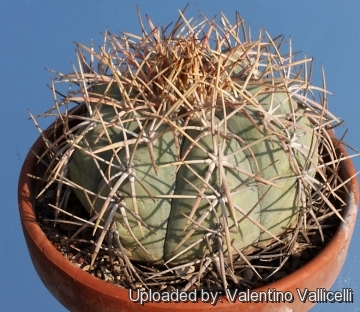 Echinocactus horizonthalonius subs. nicholii Photo by: Valentino Vallicelli
Echinocactus horizonthalonius subs. nicholii Photo by: Valentino Vallicelli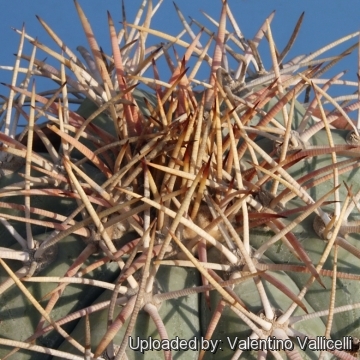 Echinocactus horizonthalonius subs. nicholii Photo by: Valentino Vallicelli
Echinocactus horizonthalonius subs. nicholii Photo by: Valentino Vallicelli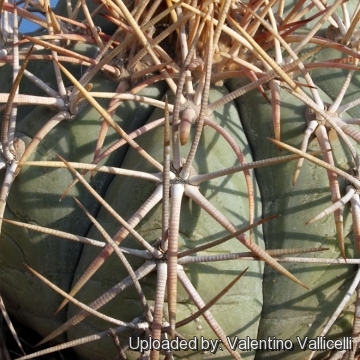 Echinocactus horizonthalonius subs. nicholii Photo by: Valentino Vallicelli
Echinocactus horizonthalonius subs. nicholii Photo by: Valentino Vallicelli














